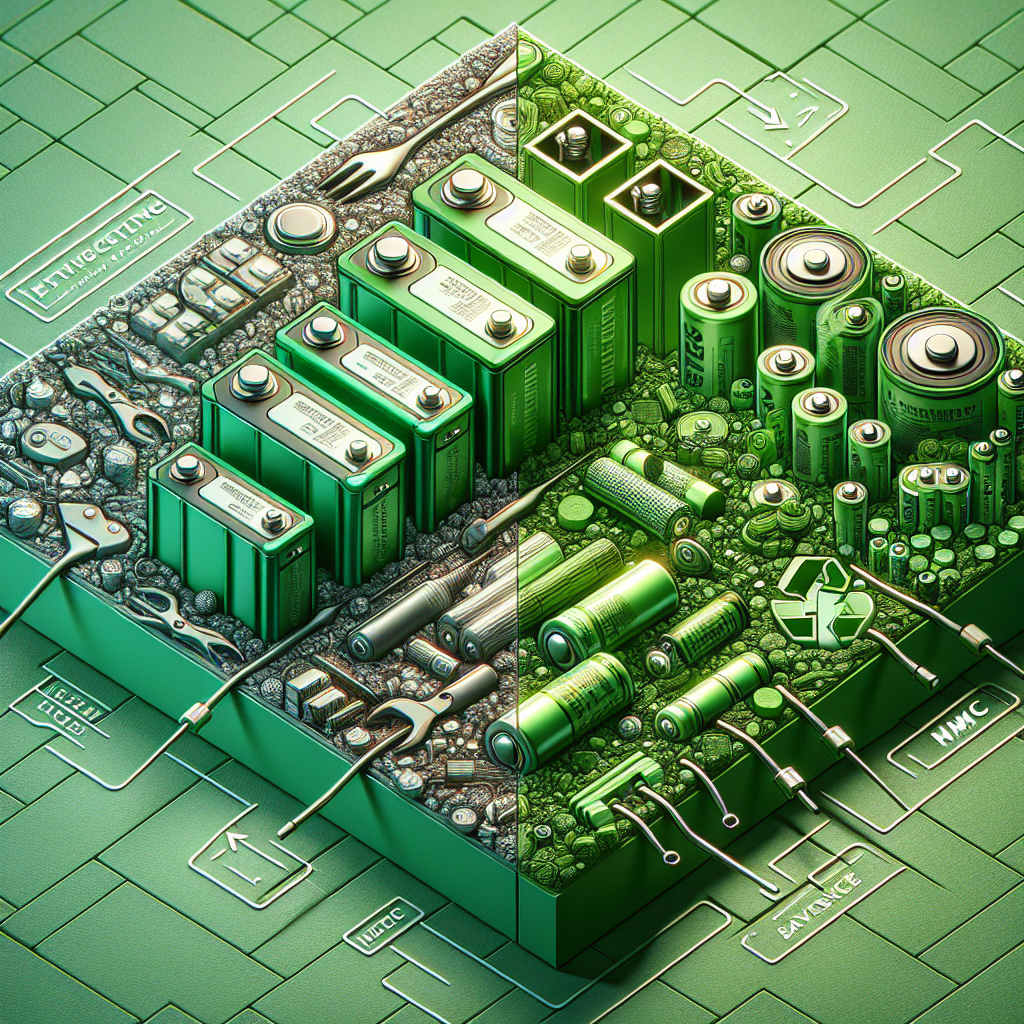Blog Ecobraz Eigre

The difference between LFP and NMC batteries and their recycling challenges
Introduction to LFP and NMC batteries
Lithium-ion batteries are widely used in electronic devices, electric vehicles and energy storage systems. Among the most common are LFP (Lithium Iron Phosphate) and NMC (Nickel Manganese Cobalt) batteries. Each has unique characteristics that impact their performance, cost and, above all, the challenges involved in recycling.
Chemical composition and main difference between LFP and NMC
LFP batteries use a chemistry based on lithium iron phosphate, while NMC batteries combine nickel, manganese and cobalt in their composition. This chemical difference has an impact on properties such as energy density, safety, cost and environmental impact. LFP batteries are recognized for their thermal stability and longer service life, but they have a lower energy density than NMC batteries. NMC have a higher energy density, providing greater autonomy for electric vehicles, but can be less stable and are more expensive due to the presence of cobalt.
Performance and typical applications
Due to their greater stability, LFP batteries are often used in stationary energy storage systems, electric bicycles and some models of electric vehicles with a focus on safety and durability. NMC batteries, on the other hand, with their higher energy capacity, are preferred in electric cars that require greater range and high-performance portable electronic devices.
Challenges in recycling LFP batteries
While LFP batteries do not contain highly toxic elements, their recycling presents specific challenges. The efficient extraction of iron and phosphate is still a technical and economic barrier, since these materials have a lower commercial value compared to metals such as nickel and cobalt. In addition, separating the components for reuse requires specific processes to avoid the loss of materials and environmental impacts.
Challenges in recycling NMC batteries
NMC batteries, because they contain valuable metals such as nickel, manganese and cobalt, arouse greater economic interest for recycling. However, the use of these metals requires sophisticated processes to recover each element efficiently. The presence of cobalt also raises environmental and health issues due to its toxicity, requiring special care during handling and recycling. Another challenge is the chemical complexity of NMC batteries, which varies according to the proportion of these metals, requiring adaptation of the recycling processes.
Environmental impacts and final considerations
The proper recycling of these batteries is essential to minimize the environmental impact resulting from improper disposal, which can cause soil and water contamination. Investing in advanced technologies for the sustainable recycling of both LFP and NMC batteries is essential for the development of the clean energy market and the circular economy. In addition, improved processes reduce the consumption of virgin raw materials and the risks associated with metal mining.
In summary, LFP and NMC batteries have significant differences in composition, performance and recycling challenges. Technological advances in recycling methods will make it possible to reuse materials more efficiently, promoting sustainability in the life cycle of these batteries.

Deixe um comentário
O seu endereço de e-mail não será publicado. Campos obrigatórios são marcados com *